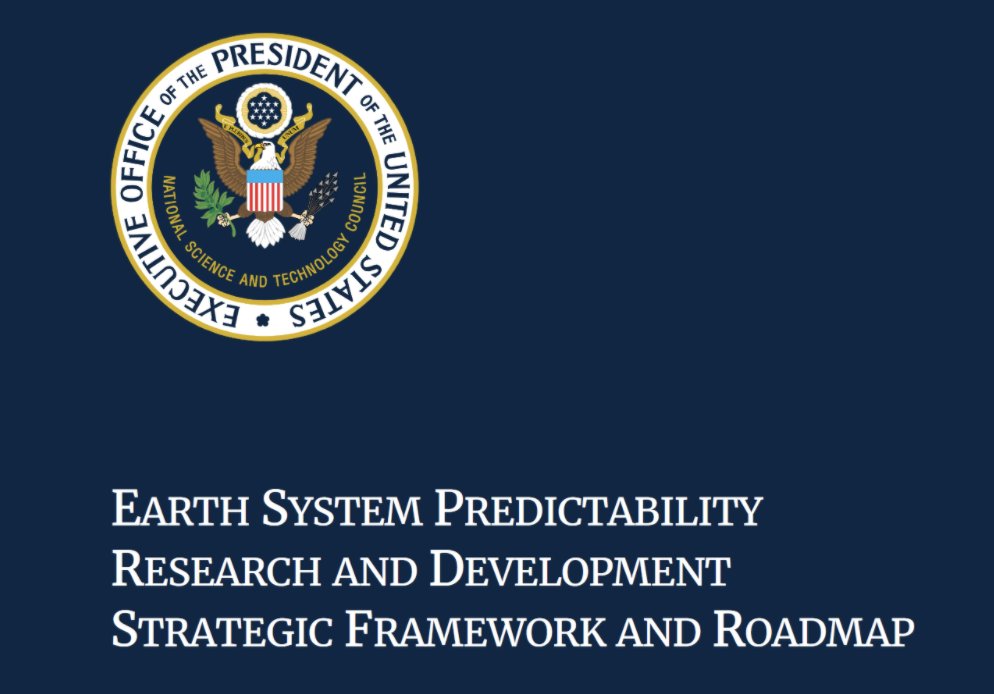- Home
- About
- Programs
- Carbon Science Planning
- Resources
- News & Opportunities
- Contact Us
White House Roadmap on Earth System Predictability released
November 16, 2020

The White House Office of Science and Technology Policy (OSTP) ’s Fast-Track Action Committee (FTAC) on Earth System Predictability (ESP) released a roadmap on Earth System Predictability. Established by the OSTP National Science and Technology Council (NSTC) in February 2020, the FTAC on ESP was charged with identifying barriers to progress, as well as prioritizing opportunities for activities that could improve our understanding of ESP. Subsequently, the FTAC engaged with the public and the interagency prior to developing an R&D Strategic Framework and a Roadmap to guide the initial R&D activities that address urgent prediction needs within the framework.' The goals of this roadmap are outlined below. The full roadmap is available for download here and here.
National Strategic Framework
Goal 1: Advance foundational understanding and theory for an improved knowledge of Earth system predictability of practical utility.
Goal 2: Reduce gaps in the observations-based characterization of conditions, processes, and phenomena crucial for understanding and using Earth system predictability.
Goal 3: Accelerate the exploration and effective use of inherent Earth system predictability through advanced modeling.
Cross-Cutting Goal 1: Leverage emerging new hardware and software technologies for Earth system predictability R&D.
Cross-Cutting Goal 2: Optimize coordination of resources and collaboration among agencies and departments to accelerate progress.
Cross-Cutting Goal 3: Expand partnerships across disciplines and with entities external to the Federal Government to accelerate progress.
Cross-Cutting Goal 4: Include, inspire, and train the next generation of interdisciplinary scientists who can advance knowledge and use of Earth system predictability.
National Roadmap to Advance High-Priority R&D
Area 1. Expand Theoretical Foundations of Earth System Predictability
Area 2. Fill Knowledge Gaps for Processes that are Crucial for Predictability
Area 3. Tap into Underutilized Observational Data to Examine Sources of Predictability Using Advanced Technologies
Area 4. Observational Networks and Advanced Technologies Deliberate for Predictability and Predictions
Area 5. Advanced Modeling and Technology, and Enhanced Collaborations

